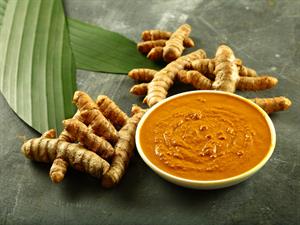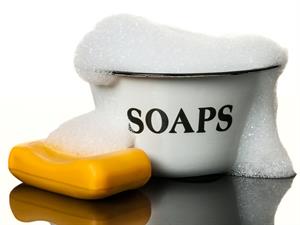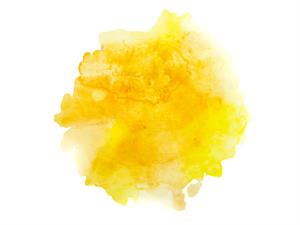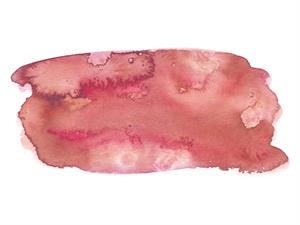PDF chapter test TRY NOW
Geetha and Kabir went to a restaurant with their friends and had delicious food. But, while eating, accidently, a bit of turmeric stain (tartaric acid) occurred in Geetha's dress.
On the next day, she saw the same cloth when mixed with soap solution during washing; the stain turns into reddish-brown in colour. Do you know why?
When a cloth is washed with a soap (basic substance), the stain containing acid changes its colour to reddish-brown due to a neutralisation reaction. So when washed with excess water, the reddish-brown colour changes back to yellow.
When a cloth is washed with a soap (basic substance), the stain containing acid changes its colour to reddish-brown due to a neutralisation reaction. So when washed with excess water, the reddish-brown colour changes back to yellow.
Example:
Let's make an art with the turmeric and soap solution.

Step 1: Make a turmeric paste by adding some turmeric powder with water.

Step 2: Similarly, add water to soap and make it a solution.

Step 3: Take a white paper or chart and cut it into any shapes as you wish.

Step 4: Now, apply the turmeric paste on the white paper and let it dry completely.

Step 5: Write or draw on the paper with the help of a cotton swab dipped in the soap solution.

Observation: We can observe that if we put the soap solution on the turmeric paper, it turns reddish-brown in color.
Result: This is because of soap containing high (hydroxy) ion concentration, so it will act as a base solution. On the other hand, turmeric solution act as an acid solution.
Therefore when the soap solution is treated with an acid solution like turmeric paper, it will turn into a reddish-brown color. So we can now understand how turmeric powder act as a natural indicator.
